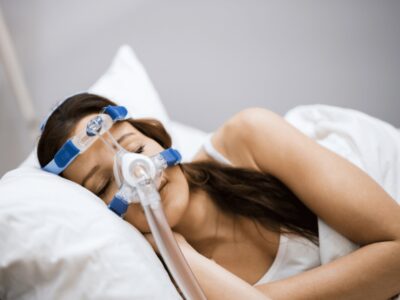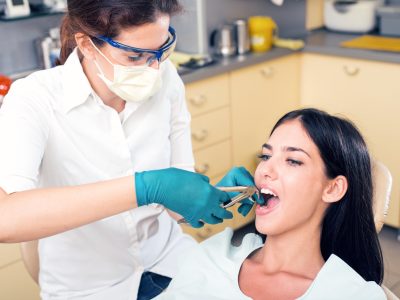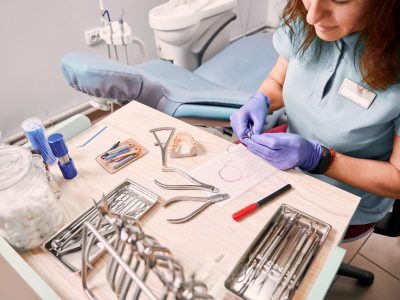
Life has a way of throwing curveballs when we least expect it, and that’s why being prepared is crucial.
When it comes to emergencies, having an essential first aid kit on hand can mean the difference between a minor hiccup and a major crisis. Whether you’re at home, on the road, or exploring the great outdoors, accidents can happen anytime, anywhere. That’s why it’s absolutely essential to have a first aid equipment kit stocked with all the necessary supplies, serving as your trusted ally in times of need.
From minor cuts and scrapes to more severe injuries, this small but mighty arsenal of medical essentials can be a true lifesaver. So, if you don’t have one already, it’s time to take action and ensure you have a first aid kit in your car or home. Keep reading to know what essentials you should have in your first aid kit.
8 Essential First Aid Kit Supplies That You Should Have in Your Car or Home
1. Adhesive Bandage
An adhesive bandage is first aid equipment that shields minor cuts, scrapes, and blisters. They provide protection, prevent infections, and speed up the healing process.
Usage
Clean the wound, choose the right size adhesive bandage, peel off the backing, apply the bandage directly over the wound, press down firmly on the adhesive edges, check for proper adhesion, and replace as needed. Remember, seek medical attention for more severe injuries.
2. Sterile Gauze Pads and Adhesive Tape
Sterile gauze pads are indispensable for covering wounds, while adhesive tape secures them in place. Together, they create a clean and protective barrier, promoting healing and preventing infection.
Usage
Cover, secure, and heal with sterile gauze pads and adhesive tape! Place the gauze over the wound, gently press to absorb blood, and then secure it with tape for a snug fit. Safety and comfort, all in one!
3. Scissors, Tweezers and Disposable Gloves

Scissors and tweezers should always be included in your first aid kit supplies; they ease the wound dressing during emergency procedures. Scissors slice through clothing or bandages, while tweezers swiftly remove splinters or debris.
Next, using disposable gloves protects you from germs and keeps everyone safe during first-aid emergencies.
Usage
Tweezers: Before using tweezers, ensure they are clean and sterilised. Gently grip the splinter, thorn, or foreign object with the tweezers as close to the skin as possible. Pull steadily and firmly in the entry direction to remove it without causing further damage.
Scissors: Carefully cut adhesive tape, gauze, or clothing around the wound. Make precise, clean cuts to ensure minimal disturbance to the injury.
Gloves: Simply slide them onto your hands before administering first aid.
4. Antiseptic Wipes or Solution
Antiseptic wipes or solutions are first aid equipment used to wipe out germs and bacteria with their powerful disinfecting properties, ensuring wounds stay clean and infection-free.
Usage
Simply take out a wipe or apply a small amount of solution onto a clean cloth. Gently clean the area around the wound to disinfect it and prevent infection. Dispose wipe properly after usage and get first aid kit refills once the antiseptic solution is finished.
5. Pain relievers
Pain relievers like ibuprofen and acetaminophen help ease aches and pains and bring sweet relief, helping you bounce back stronger and ready to conquer the day.
Usage
Using pain relievers is simple and effective! Follow the guidelines on the packaging or seek further advice from a healthcare professional for proper dosage.
6. Antihistamines
Antihistamines are first-aid emergency equipment that comes in handy for allergic reactions, insect bites, or stings. They block allergic reactions, helping bring relief and easy breathing.
Usage
When allergies strike, simply follow the instructions on the packaging or consult a healthcare professional for proper dosage.
7. Safety Pins
Safety pins are first aid equipment that should not be underestimated. They hold bandages in place, mend tears, and come to the rescue in fashion emergencies.
Usage
Open the pin by sliding the clasp out of the coil, insert it through the fabric or bandage you want to secure, and then close the pin securely.
8. First Aid Manual
Our list of first aid equipment would be complete without a first aid manual. The ultimate guidebook in times of crisis! It contains step-by-step instructions and life-saving information. From CPR to treating burns and fractures, this indispensable companion equips you with the skills to handle emergencies confidently. Don’t leave home without it!
Usage
Simply open its pages and let it guide you through step-by-step instructions for various emergencies.
Tips for Organizing and Maintaining a First Aid Kit
- Regularly check your kit: Set a reminder to inspect your first aid kit at least every six months. Look for expired items, damaged packaging, or missing supplies.
- Restock as needed: Replace any used or expired items promptly and get first aid kit refills when necessary. Keep a checklist of essential supplies handy to ensure you have everything when restocking.
- Keep it organised: Arrange your supplies in a logical manner, making it easy to find what you need quickly. Consider using labelled compartments, pouches, or clear plastic bags to keep items organised and visible.
- Consider specific needs: Tailor your first aid equipment to your specific needs. If you have specific medical conditions or engage in certain activities (e.g., hiking or camping), include additional items such as medications or specialised bandages.
- Include emergency contact information: Keep a list of emergency contact numbers, including local hospitals, poison control centres, and personal emergency contacts, inside your first aid kit.
- Customise for travel: If you have a portable first aid kit for travel, ensure it complies with any regulations for carry-on items. Consider including travel-sized items and medications suitable for your destination.
Having first aid kit supplies at home and in your car is the ultimate safety net in life’s unpredictable moments. It’s a small investment that can make a world of difference, providing peace of mind and empowering you to handle emergencies with confidence.










